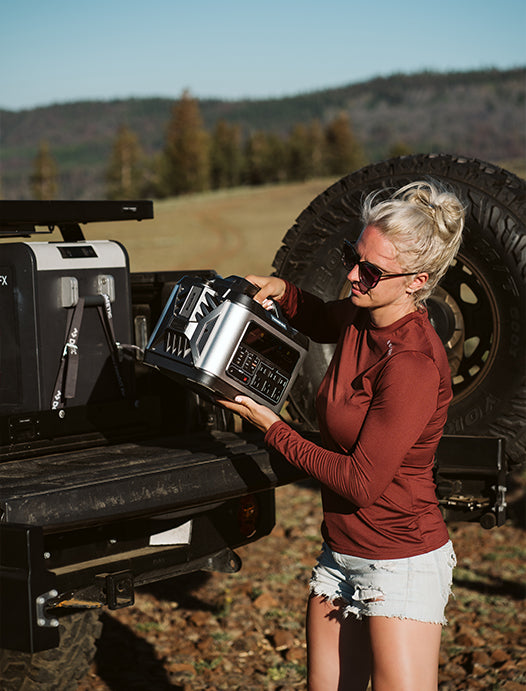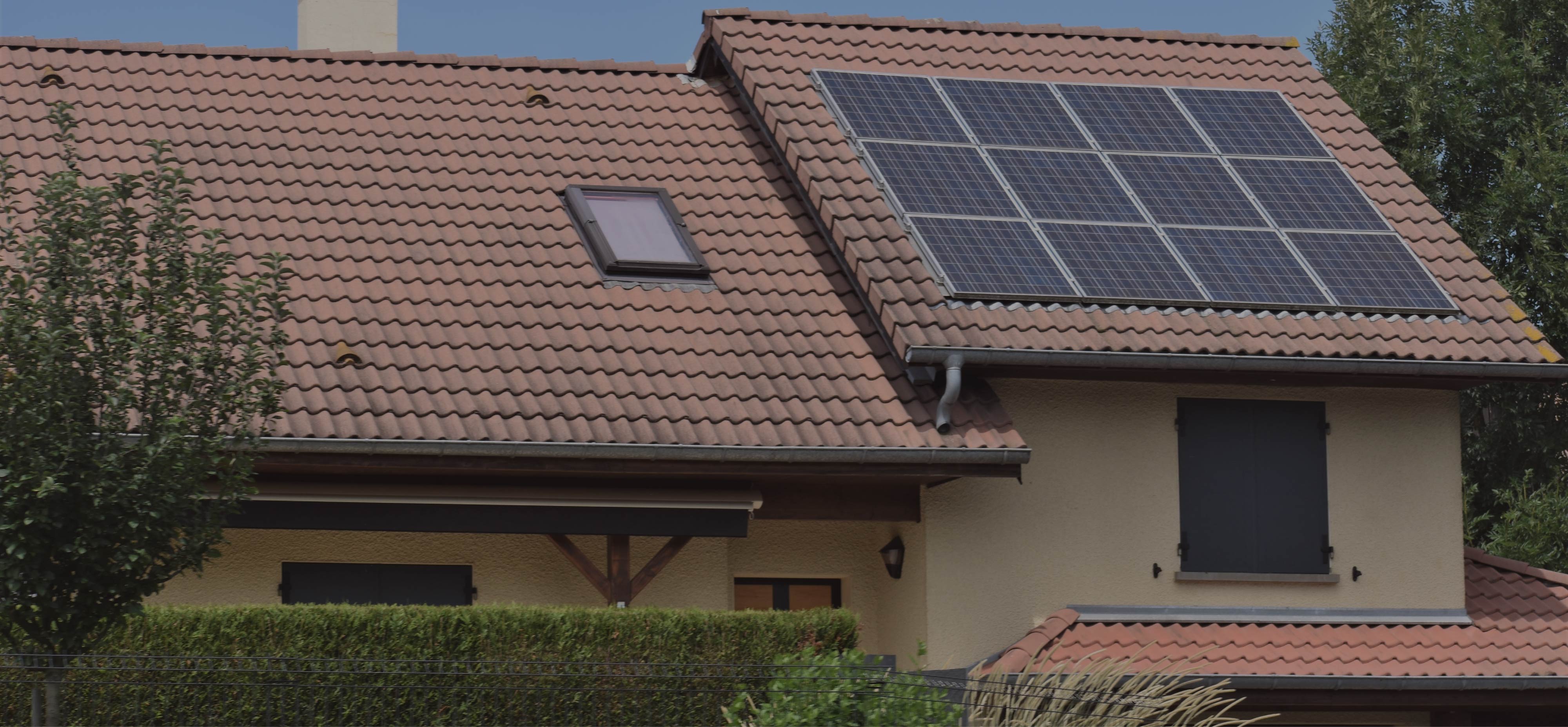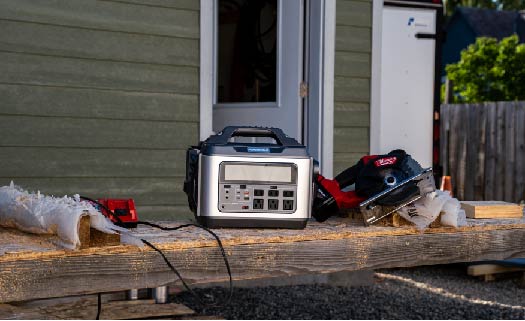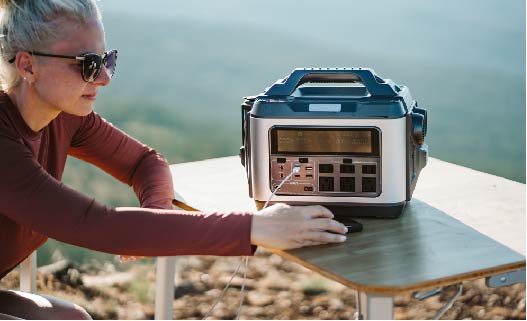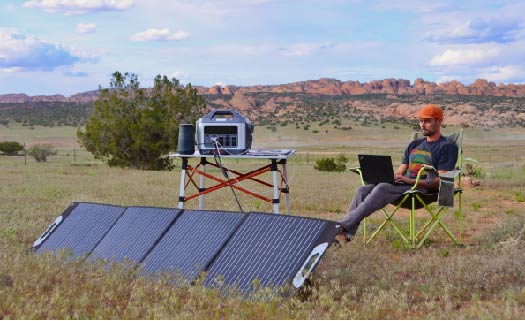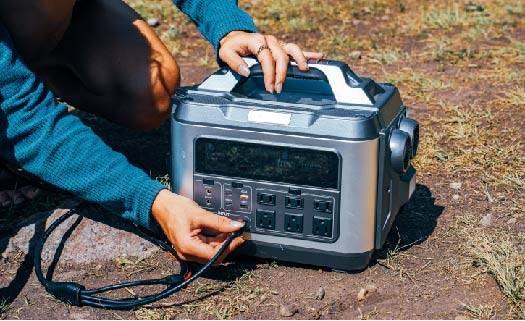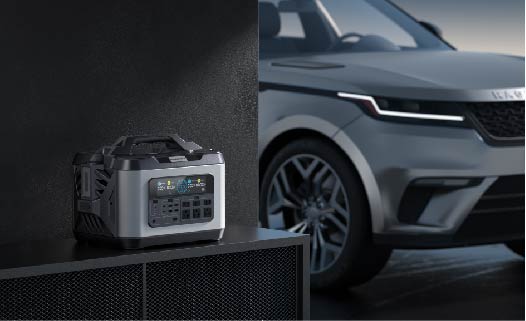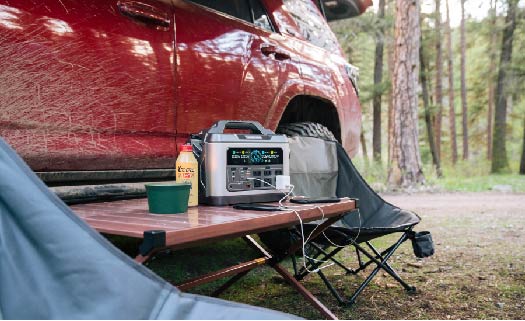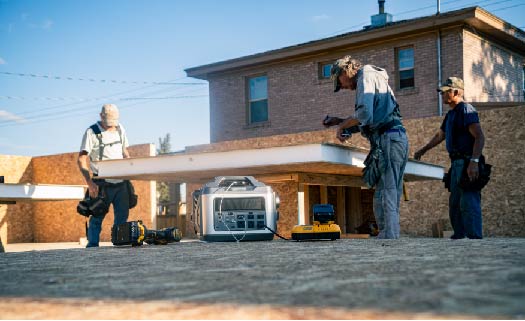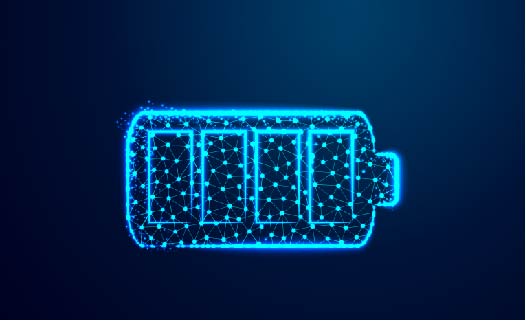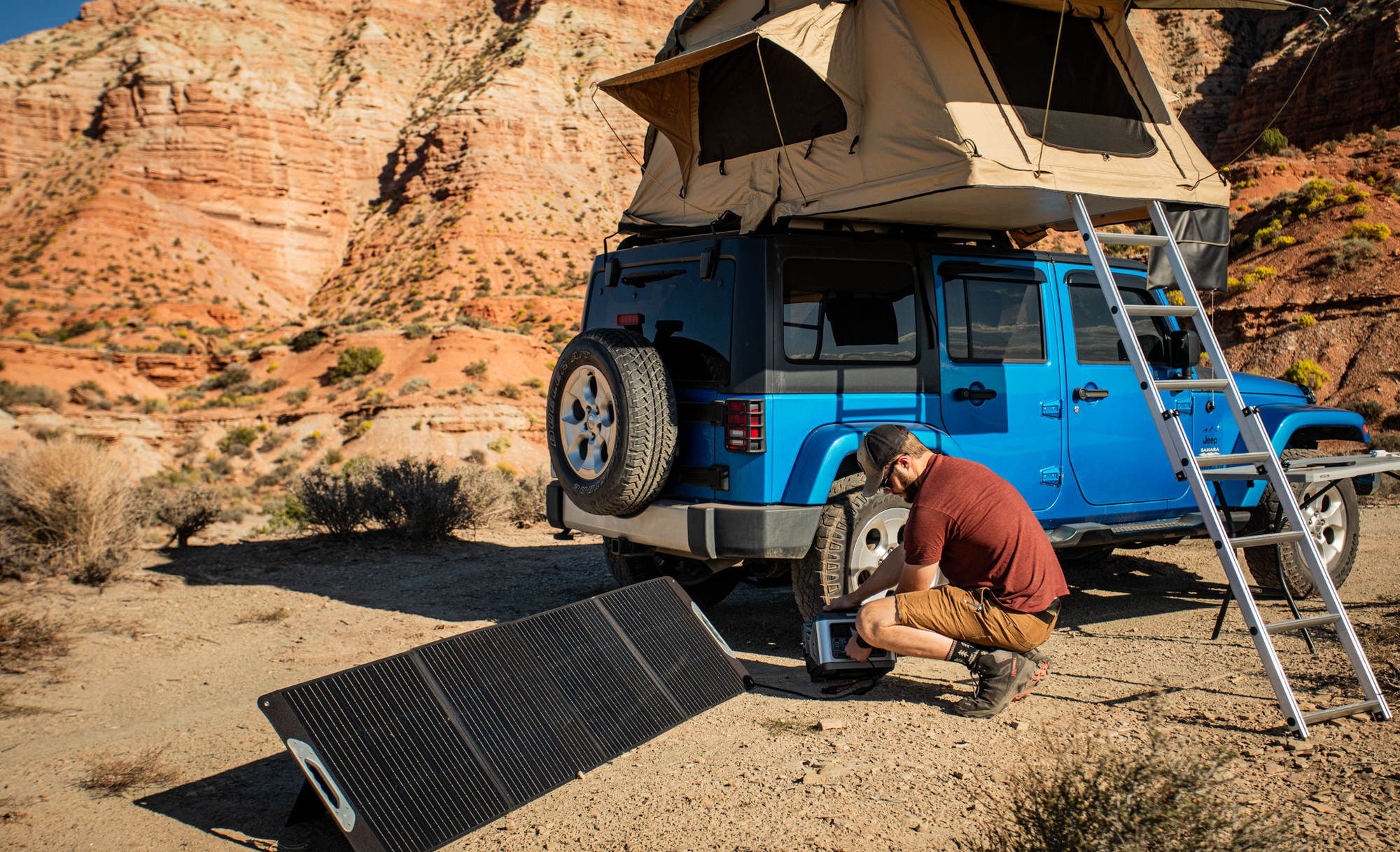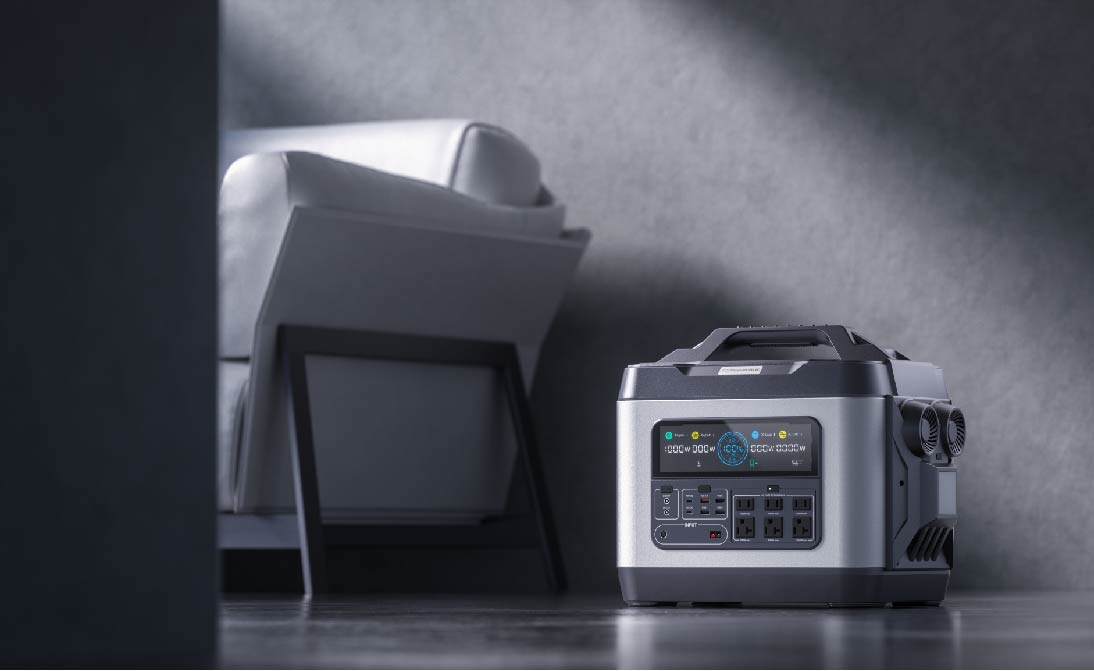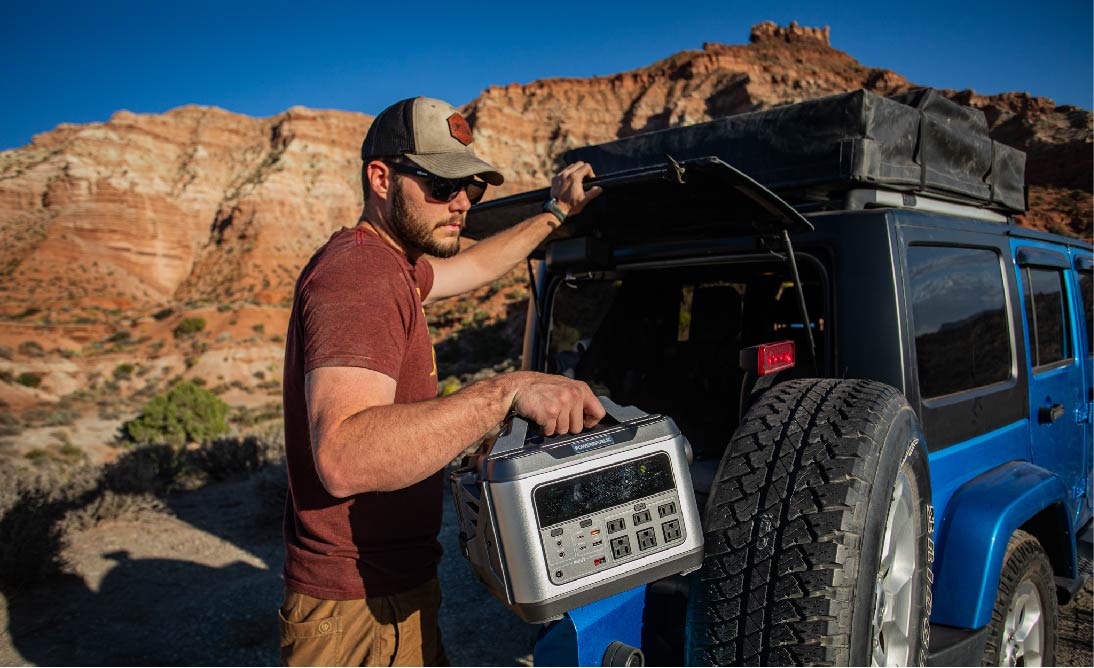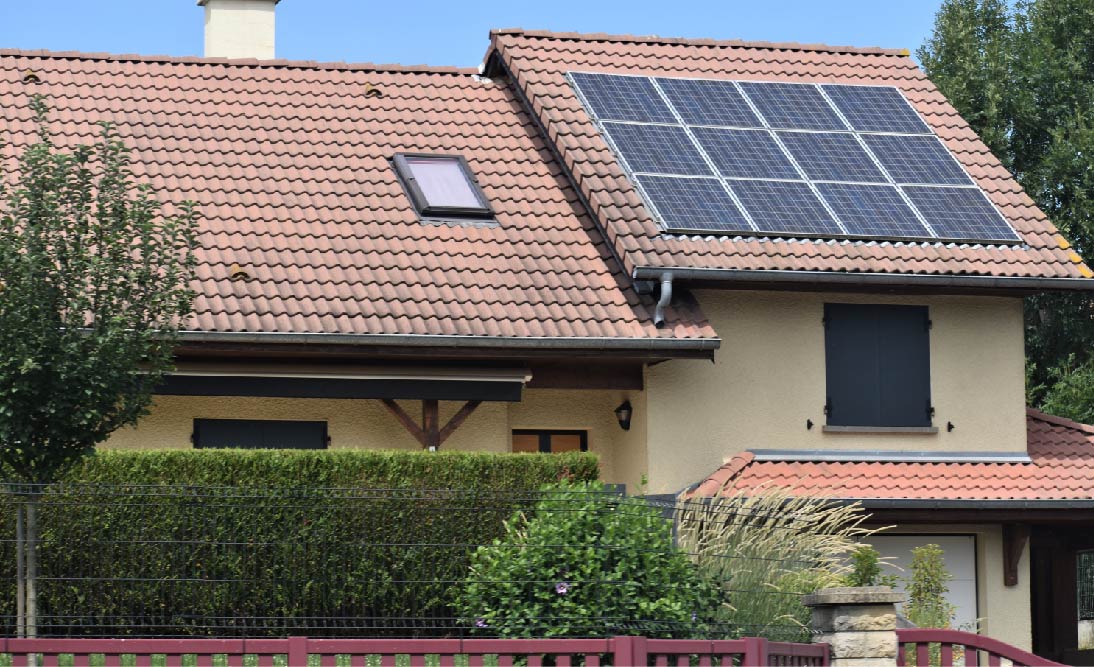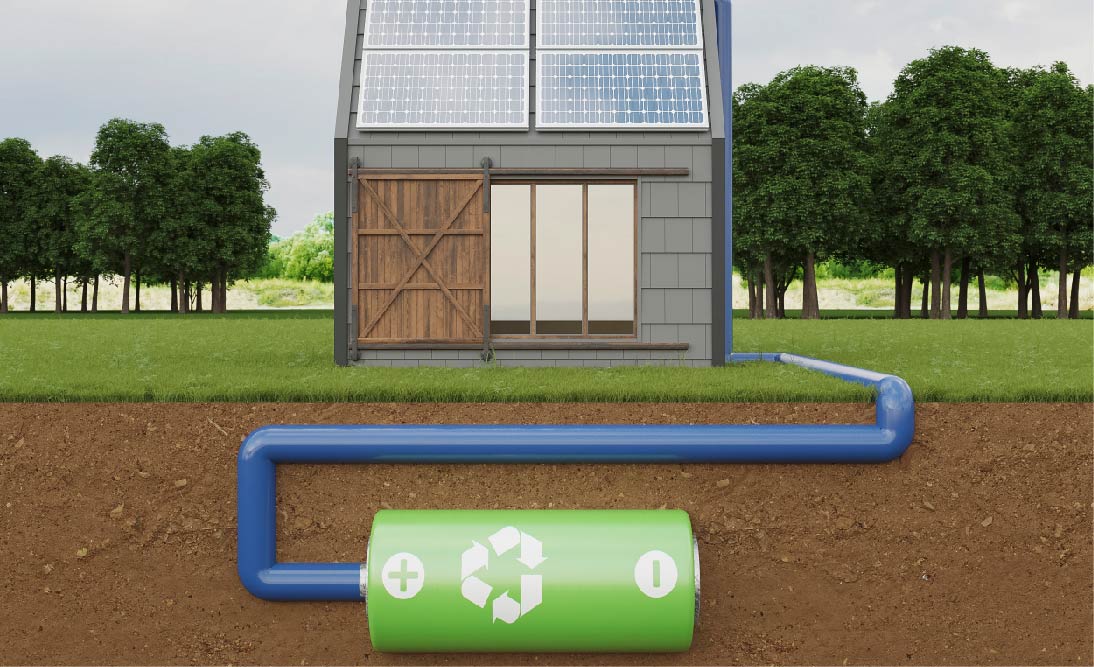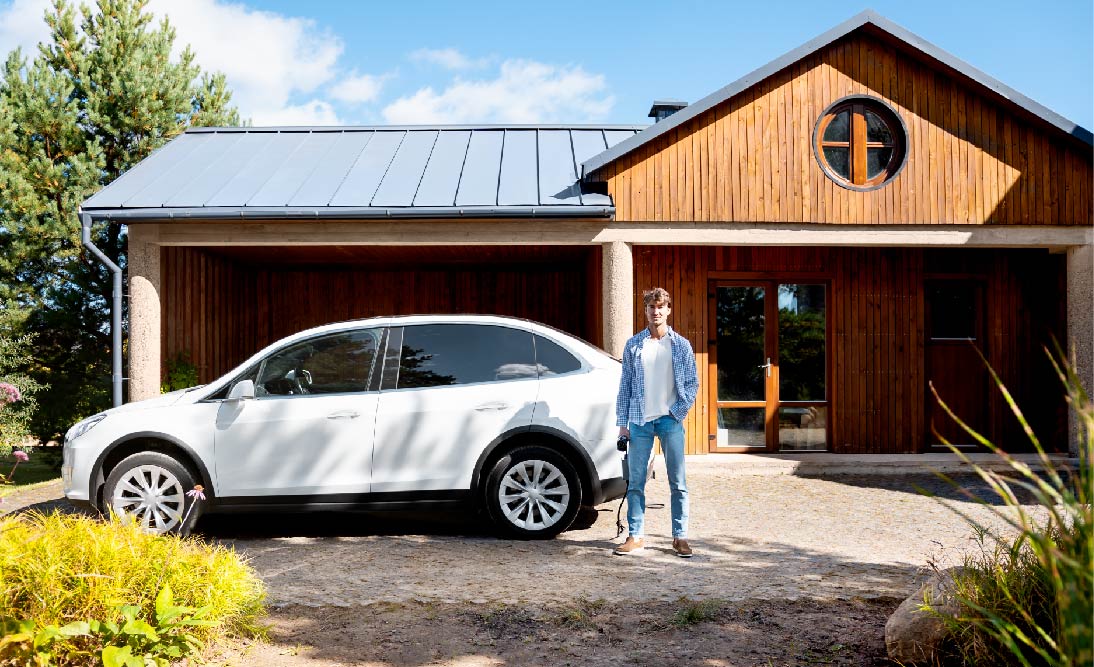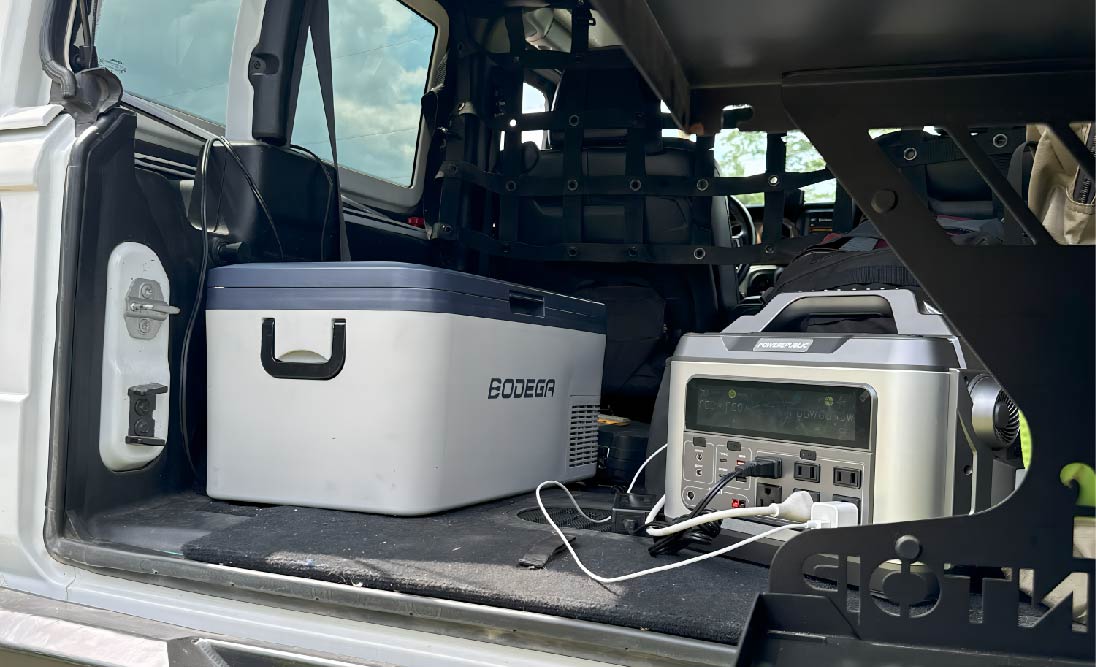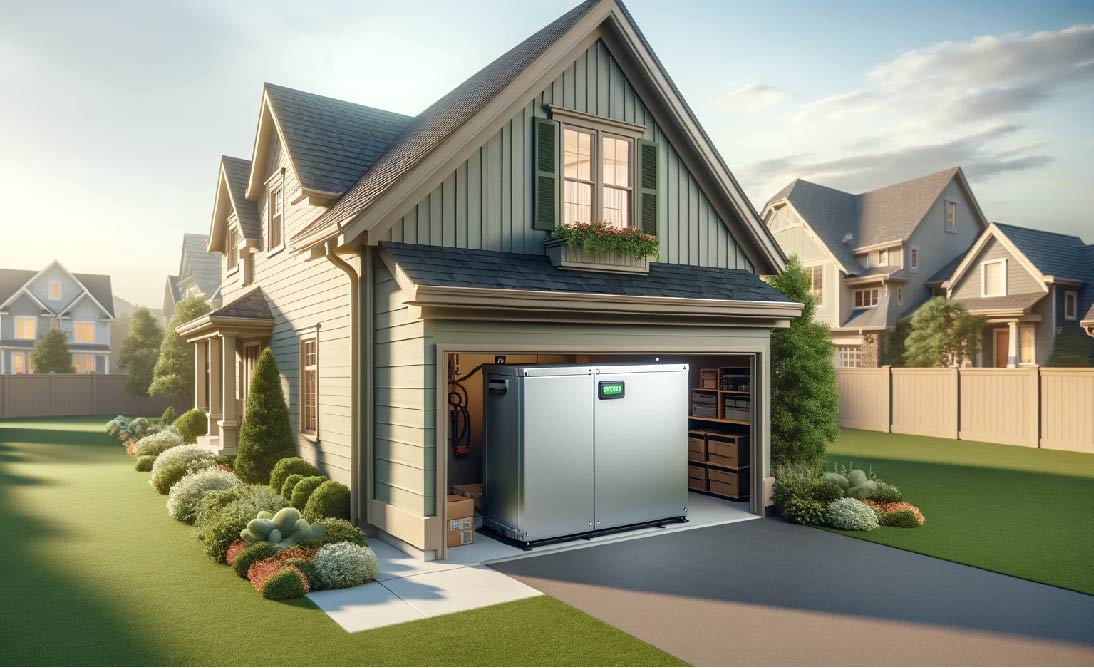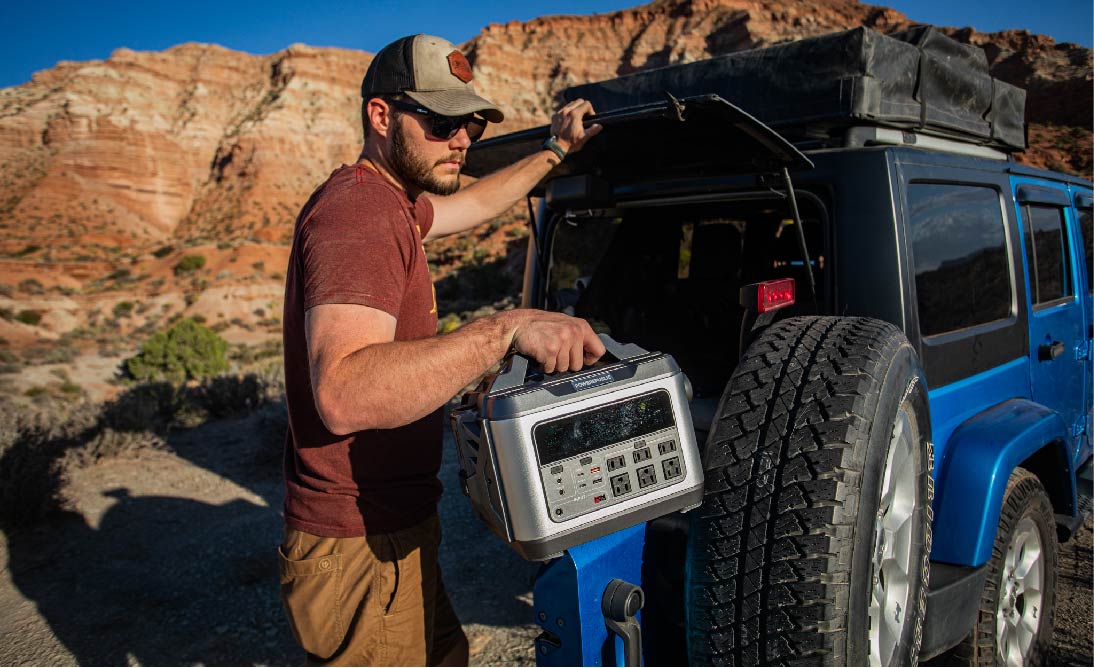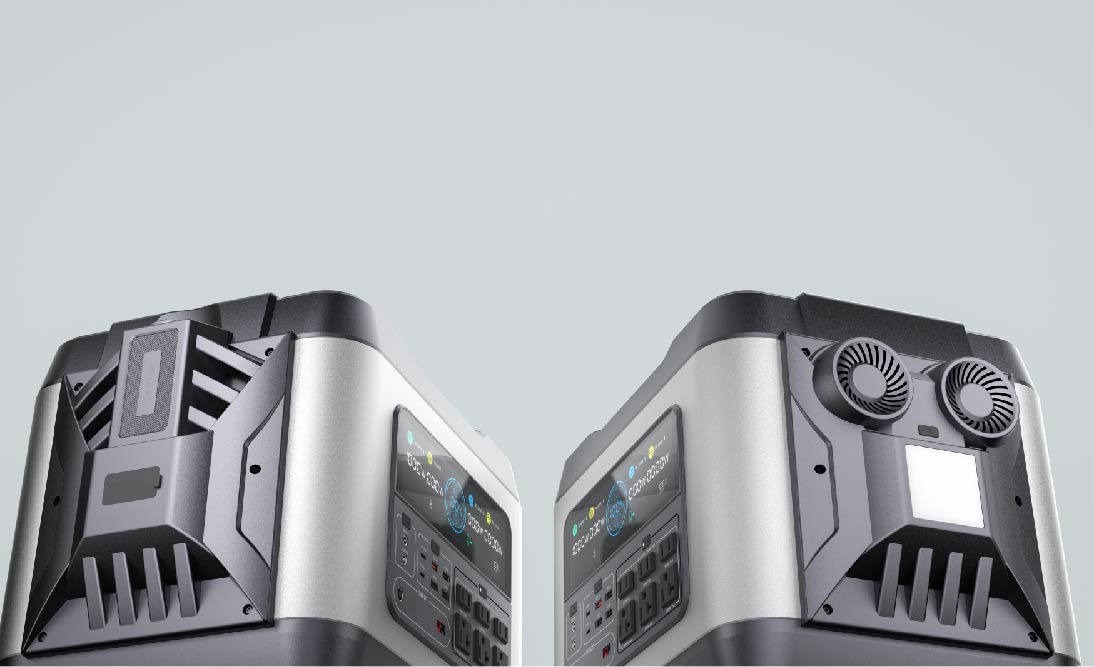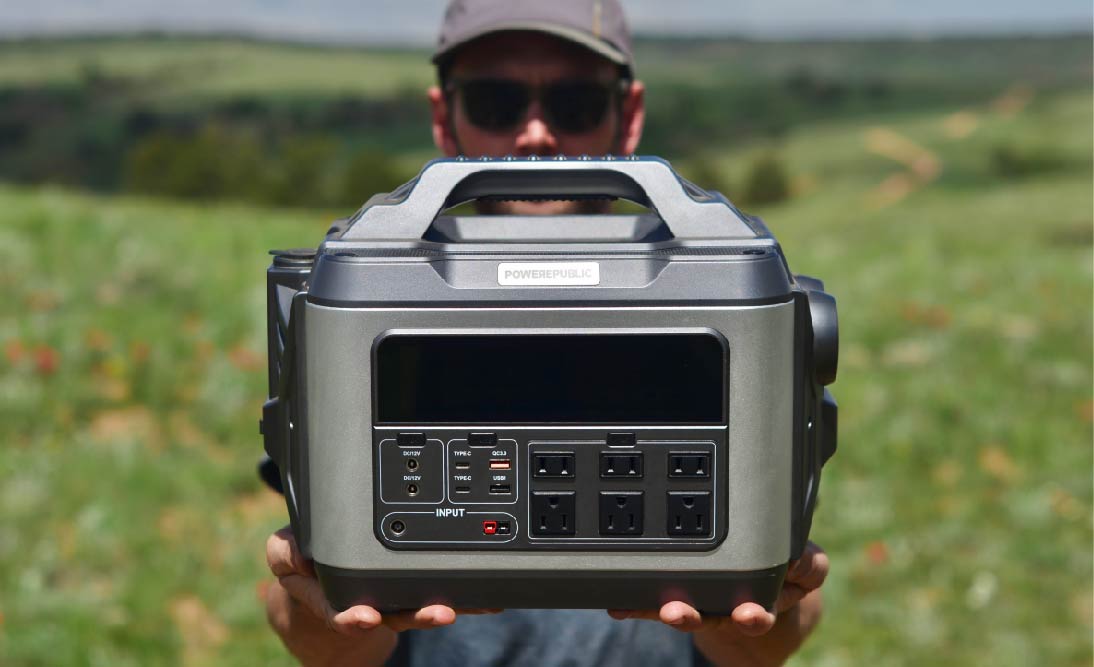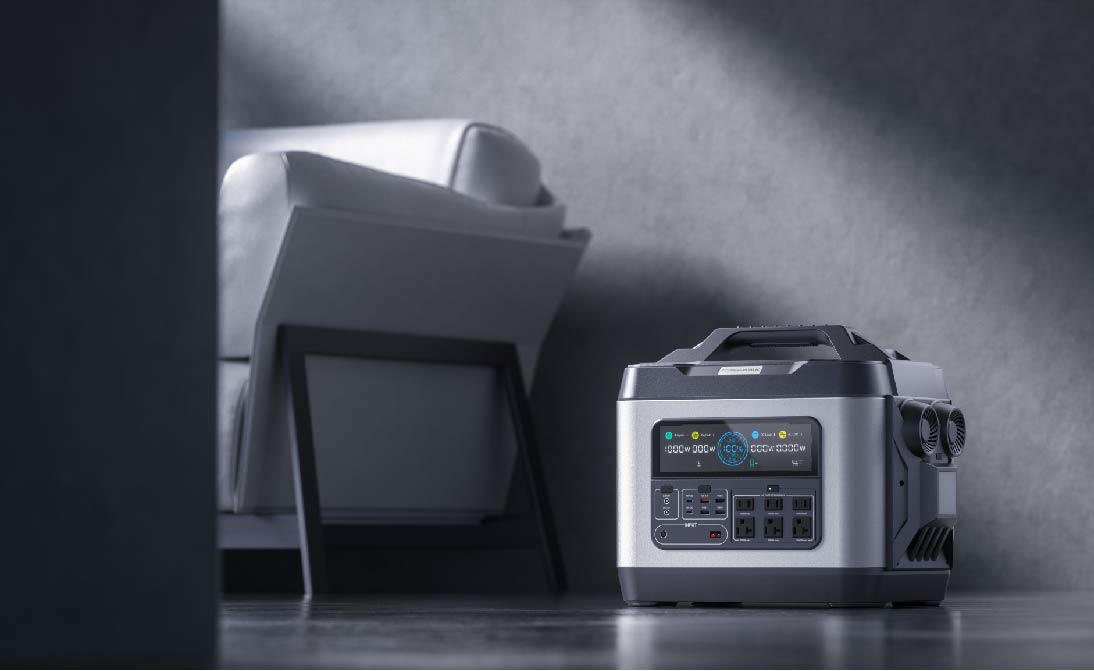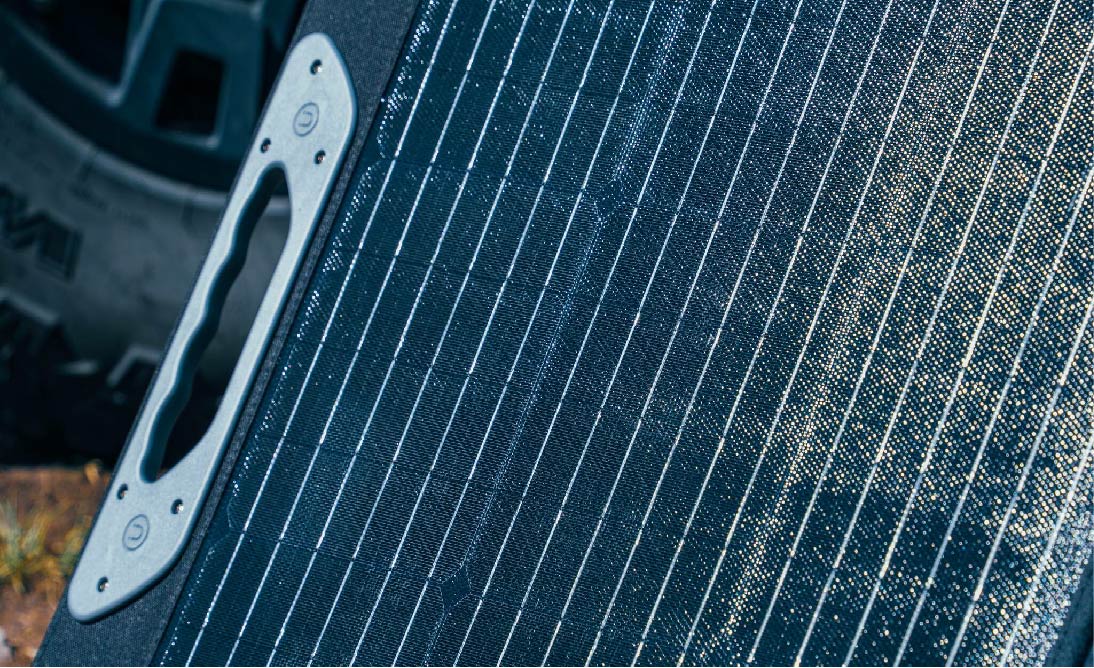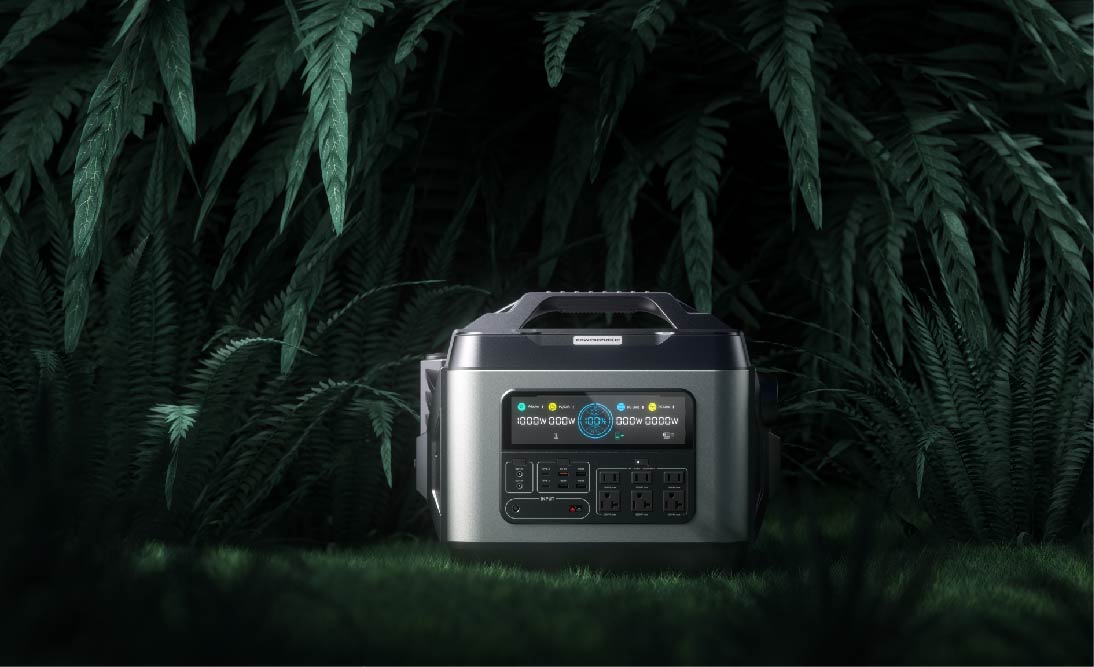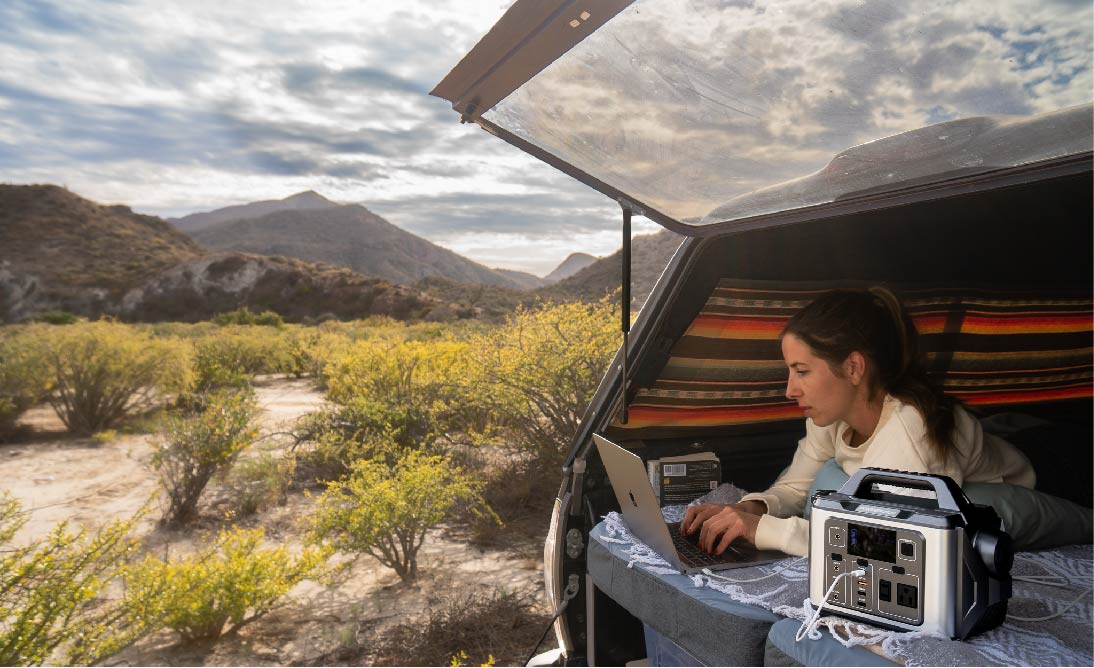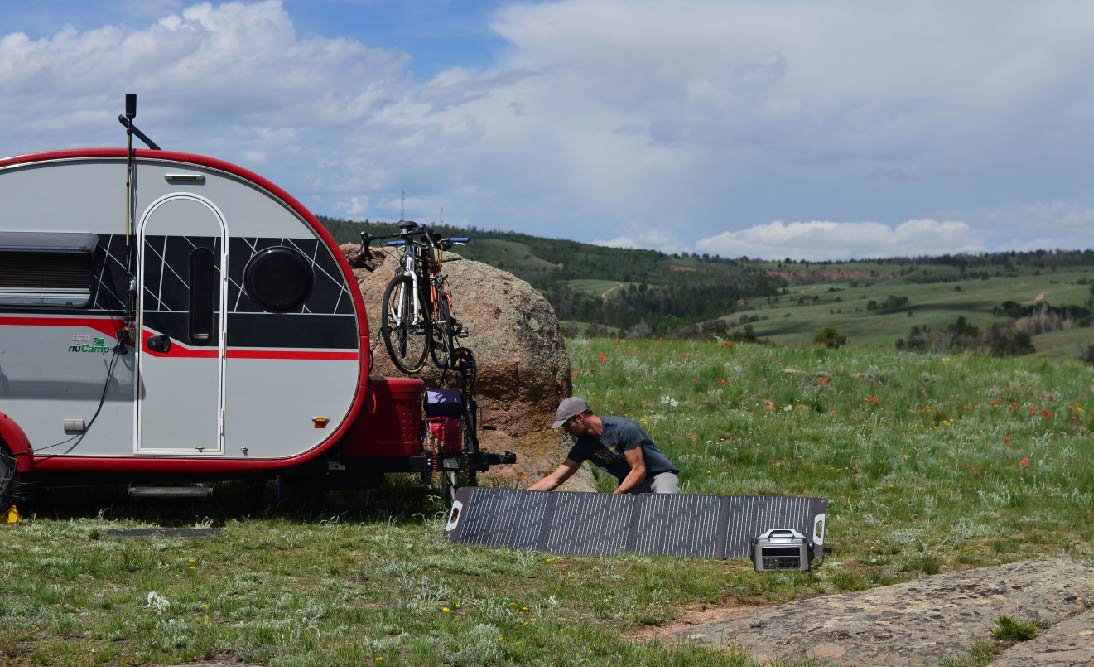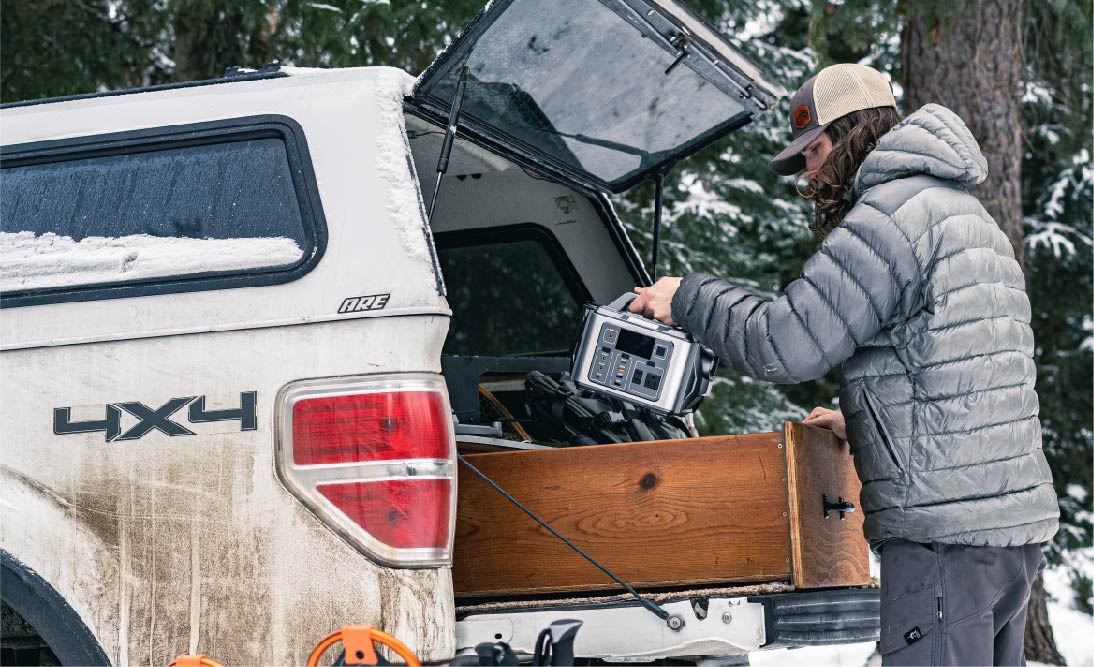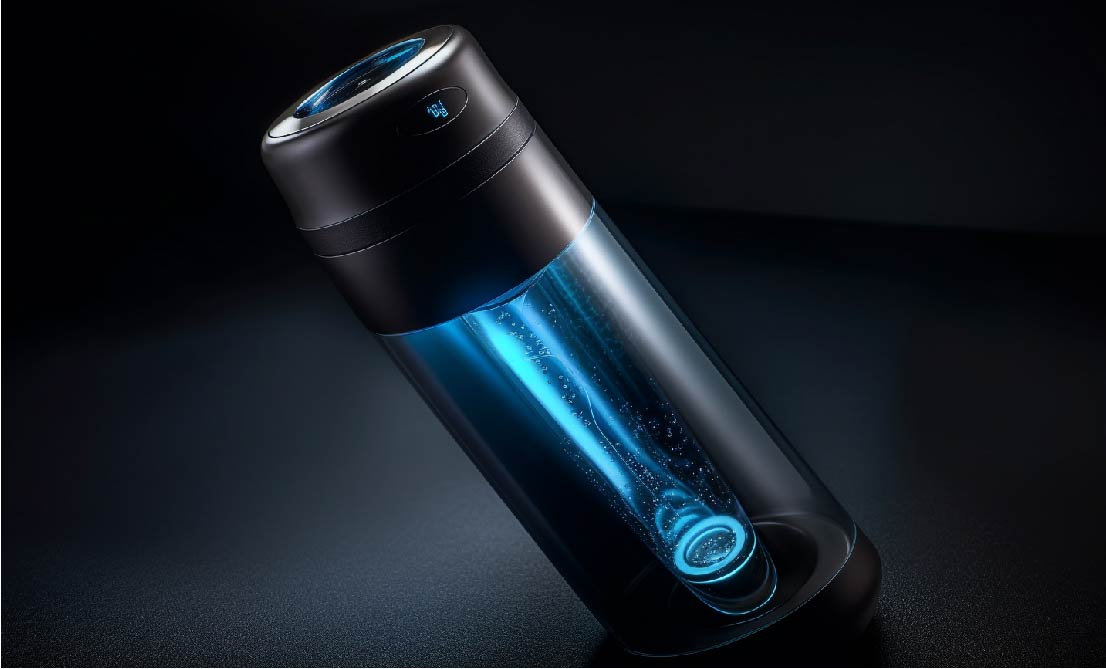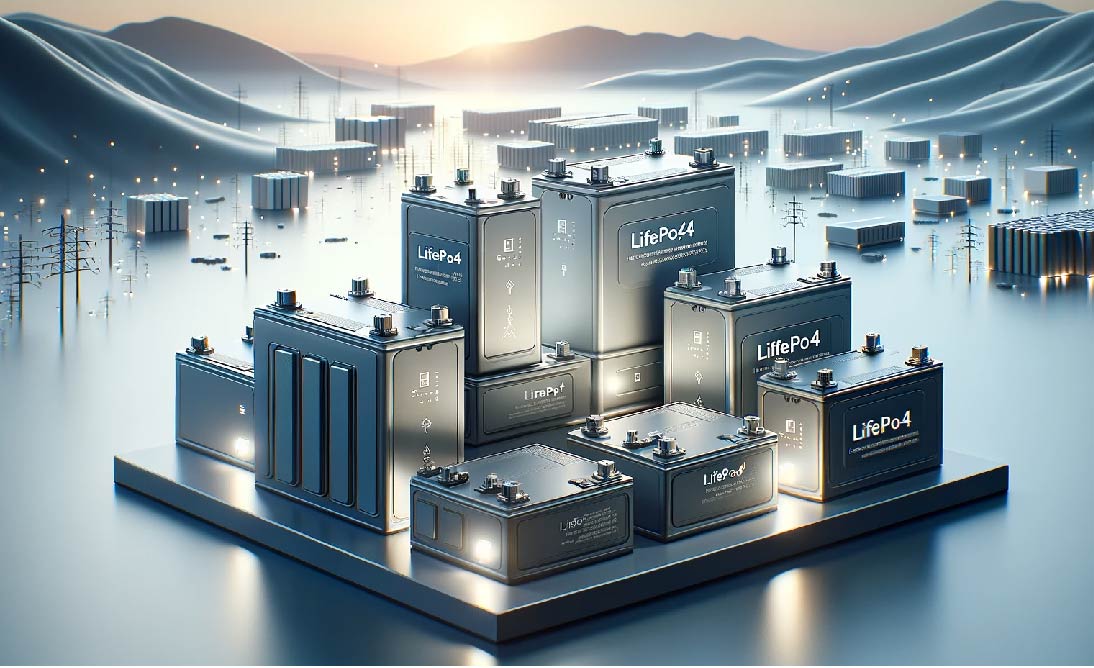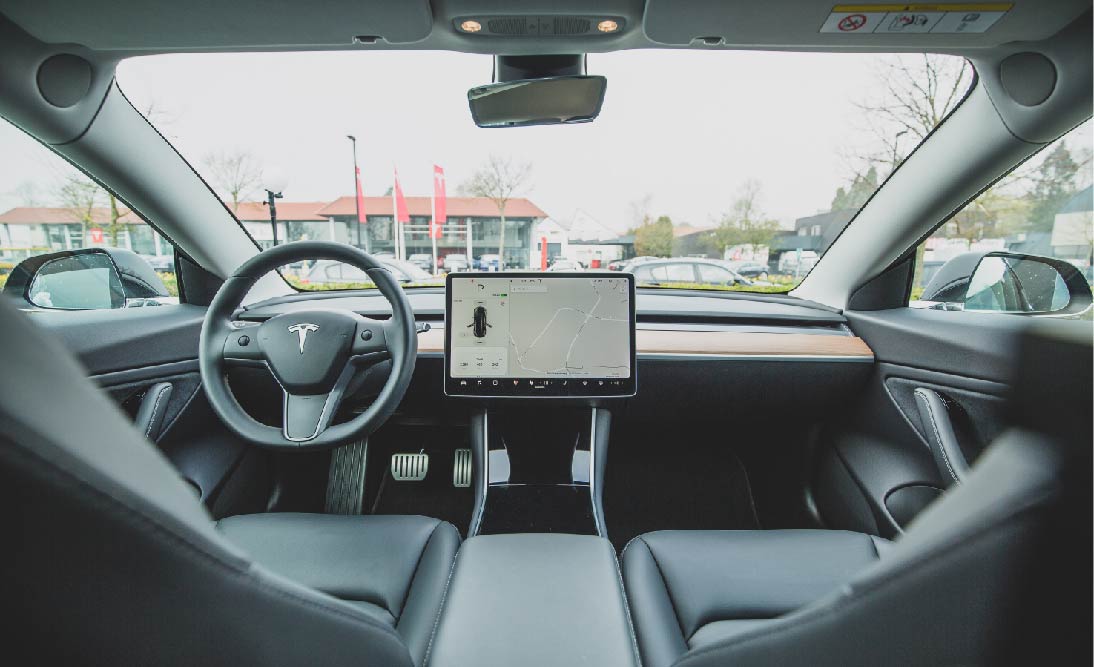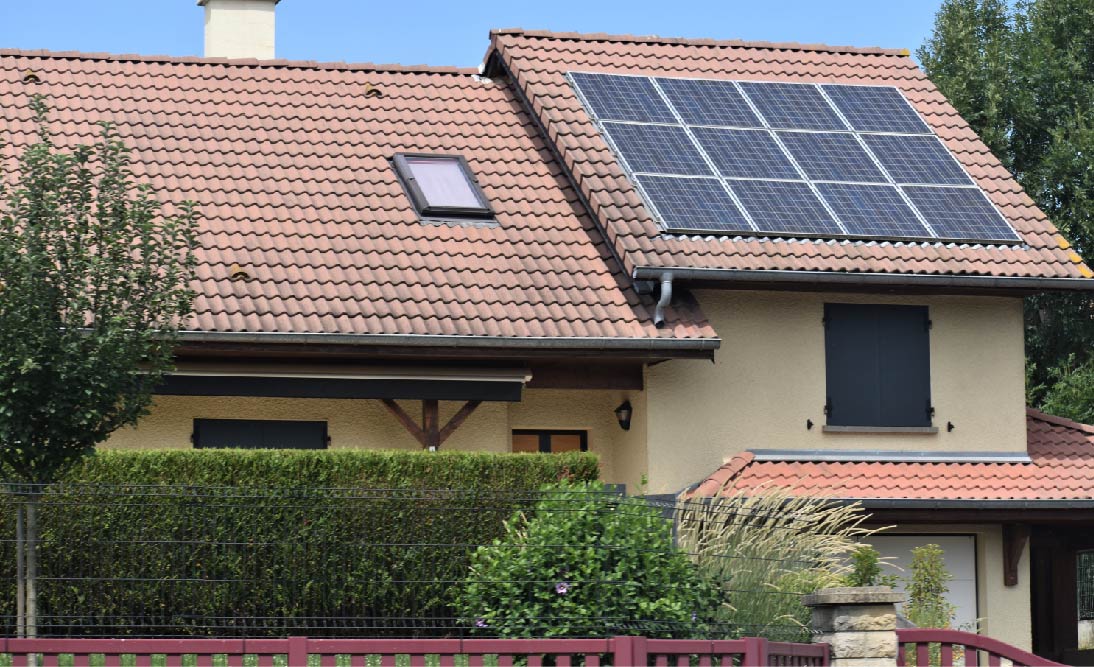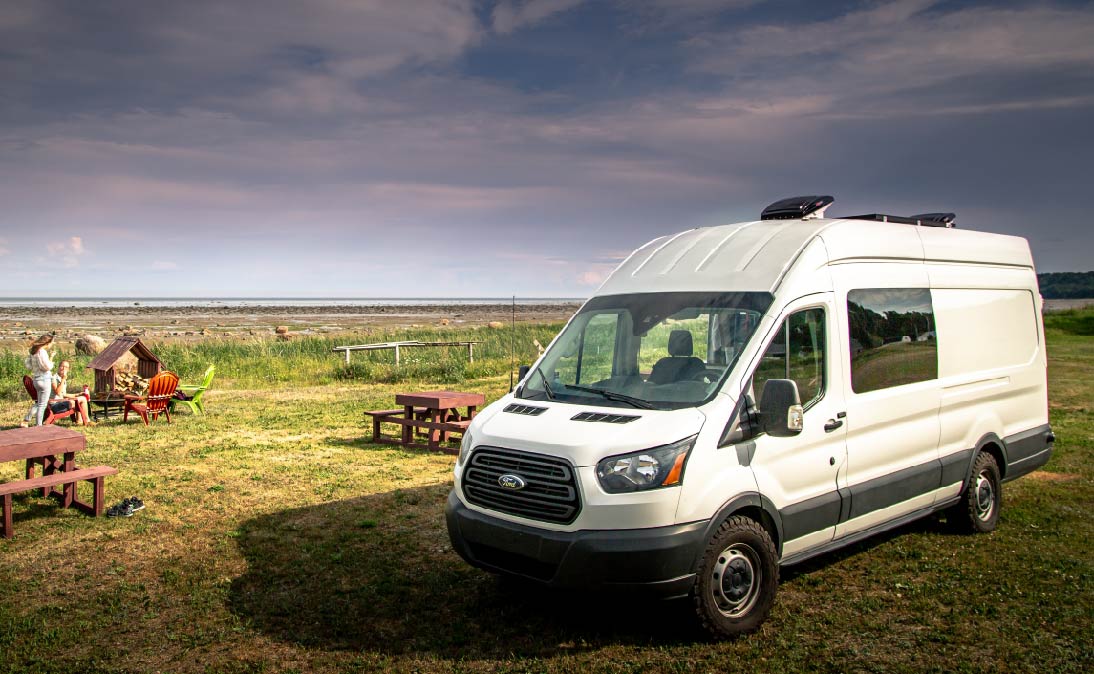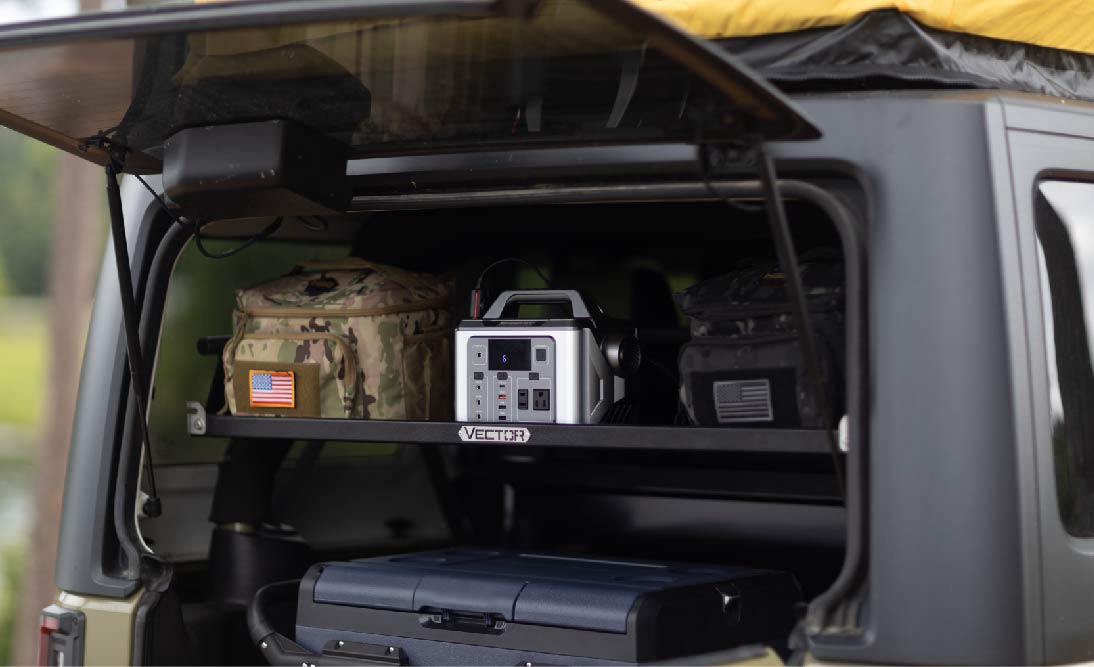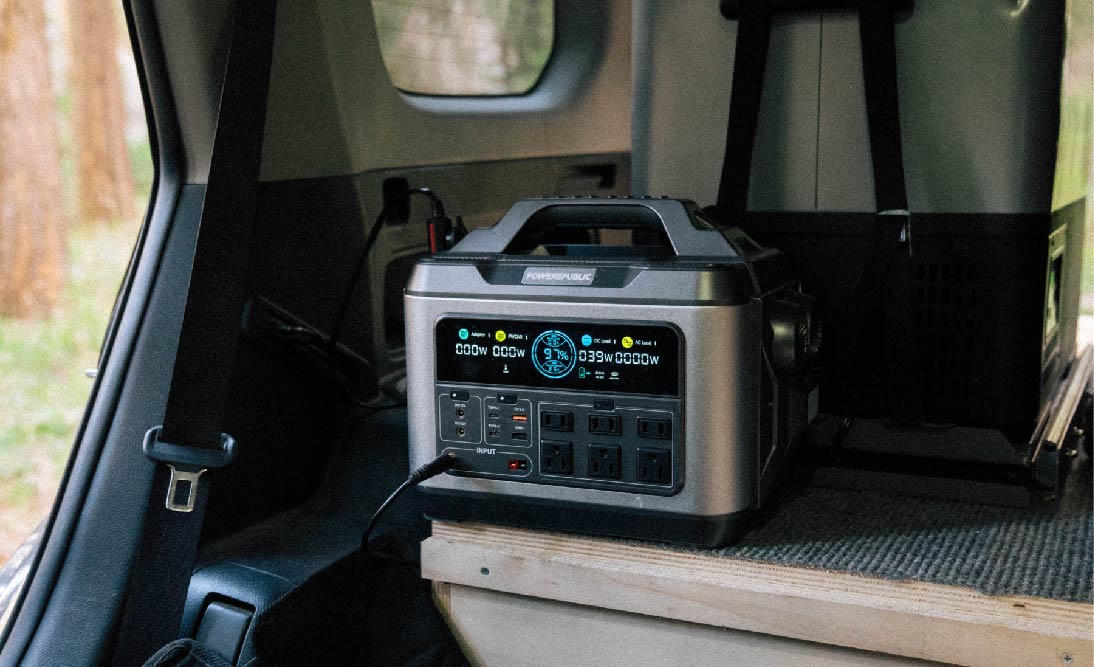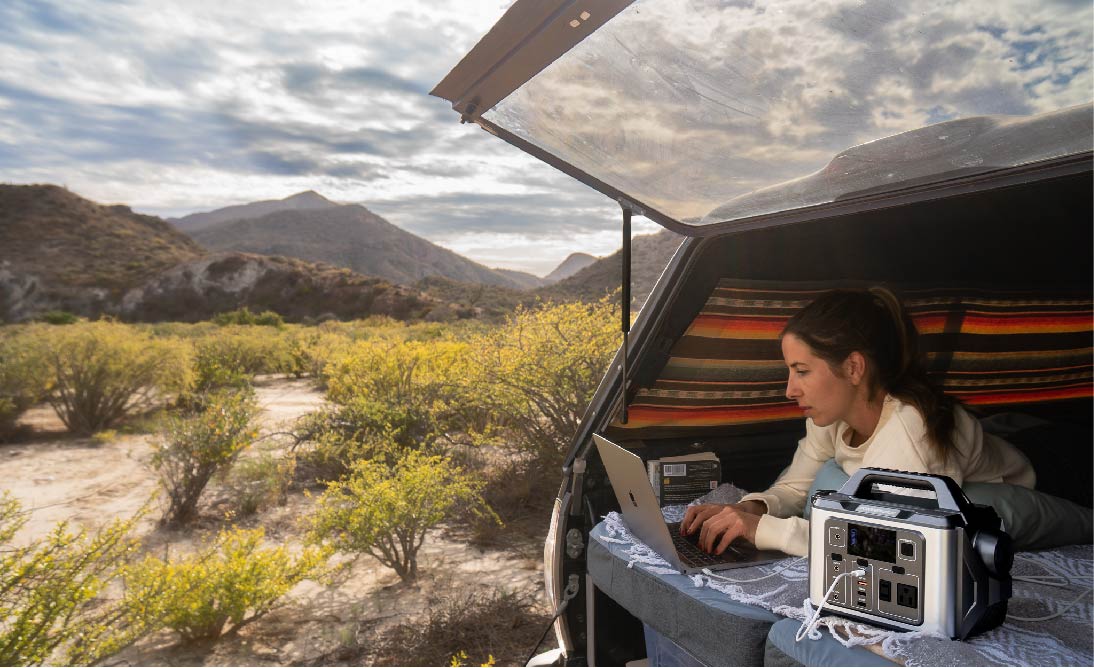Table of Contents:
-
Benefits and Limitations of Battery Backup for Home Appliances
-
How To Figure Out the Right-Sized Battery Backup For Home Appliances?
-
FAQ III: Can I Use a Battery Backup for Home Appliances Without Solar?
For those living in areas prone to extreme weather or frequent power outages, having sufficient power to keep essential devices and appliances operational until electricity is restored is crucial. Home battery backup solutions play a pivotal role in such scenarios. The choice of a battery backup solution depends on the duration of the power outages and the number of devices and appliances you need to operate during a blackout. These solutions vary in terms of power output, battery capacity, solar panel integration, and other features.
In this guide, we will explore battery backup options for home appliances, discuss how to select the right one and introduce two models from POWEREPUBLIC as potential choices.
So, let’s get started!
Battery Backup Solutions Overview

Battery backup solutions are essential for ensuring uninterrupted power supply during outages, especially in areas prone to extreme weather or frequent power disruptions. These systems store electrical energy that can be utilized when the regular power grid fails, providing a reliable source of electricity to keep vital home appliances and devices operational.
What They Are:
-
Emergency Power Source: Battery backups act as a secondary power source that kicks in when the primary power grid fails.
-
Power Stability: They provide stable power to protect sensitive electronic devices from damage due to power surges or fluctuations.
-
Versatility: Used in various settings, from residential homes to data centers and hospitals, to ensure continuous operation of critical systems.
Main Components:
-
Batteries: The core of the system, where energy is stored for use during a power outage. Most modern systems use lithium-ion batteries, though other types like lead-acid are also common.
-
Inverter: Converts stored DC power from the batteries into AC power, which is what most home appliances and electronic devices use.
-
Charge Controller: Manages the flow of electricity into the batteries, ensuring they charge efficiently and safely.
-
Transfer Switch: Automatically switches the power source from the main grid to the battery backup when an outage is detected.
-
Control System: Often includes a user interface for monitoring and managing the system. Advanced setups may include remote control capabilities and software integration for energy management.
-
Optional Solar Panels: In some systems, solar panels are integrated to recharge batteries, making the solution more sustainable and reducing reliance on the grid.
How They Work:
-
Charging Phase: When the main power grid is active, the battery backup system charges its batteries, storing energy for future use.
-
Detection of Power Loss: The system continuously monitors the power supply. If an interruption or outage is detected, the transfer switch activates the backup system.
-
Power Conversion: The inverter converts the DC power from the batteries into AC power, maintaining the operation of connected devices and appliances.
-
Supplying Power: The system provides power to designated circuits or appliances. How much it can power and for how long depends on its capacity and the energy demands of the connected devices.
-
Recharging: Once the main power grid is restored, the system switches back, and the batteries begin recharging for the next use.
Overall, battery backup solutions are a reliable way to ensure that essential functions and devices remain operational during power outages, providing security and convenience in uncertain power conditions.
Type of Battery Backup for Home Appliances

When considering battery backup solutions for home appliances, it's essential to understand the different types available. Each type offers unique features suited to varying needs and scenarios. Here's an overview:
1. Lead-Acid Batteries
-
Description: One of the oldest types of rechargeable batteries. These are widely used due to their availability and cost-effectiveness.
-
Best For: Basic home backup needs; suitable for those requiring a more economical solution.
-
Considerations: They have a shorter lifespan compared to modern battery types and require regular maintenance.
2. Lithium-Ion Batteries
-
Description: These batteries are known for their high energy density and are commonly used in portable electronics and electric vehicles.
-
Best For: Households needing a reliable, maintenance-free solution with a longer lifespan.
-
Considerations: They are more expensive than lead-acid batteries but offer better performance and efficiency.
3. Nickel-Cadmium (NiCd) Batteries
-
Description: Known for their robustness, especially in extreme temperature conditions.
-
Best For: Environments where temperature fluctuations are significant.
-
Considerations: They can be more costly and have environmental concerns due to the cadmium content.
4. Nickel-Metal Hydride (NiMH) Batteries
-
Description: Offer a middle ground between NiCd and lithium-ion batteries regarding cost and performance.
-
Best For: Users looking for a balance between cost and efficiency without the environmental impact of NiCd.
-
Considerations: They have a lower energy density than lithium-ion batteries and a shorter overall lifespan.
5. Flow Batteries
-
Description: These use two chemical components dissolved in liquids separated by a membrane, providing energy through a chemical reaction.
-
Best For: Large-scale applications or homes with significant energy storage needs.
-
Considerations: They are complex and require a larger physical footprint, making them less suited for typical home use.
6. Saltwater Batteries
-
Description: A newer technology that uses saltwater as an electrolyte. They are non-toxic and environmentally friendly.
-
Best For: Eco-conscious users looking for a safe, sustainable power storage option.
-
Considerations: Currently, they offer lower energy density and are still in the emerging stages of development.
So the choice of battery backup for home appliances depends on several factors, including budget, energy needs, maintenance preferences, environmental considerations, and space availability. Understanding these types and their specific advantages and limitations can help in making an informed decision suitable for your specific requirements.
Benefits and Limitations of Battery Backup for Home Appliances
![]()
Battery backup systems are increasingly becoming a vital component of modern homes, especially in areas experiencing frequent power outages. Understanding the benefits and limitations of these systems is crucial for homeowners considering this investment.
Benefits:
-
Uninterrupted Power Supply: The primary benefit is the provision of a continuous power source during outages, ensuring essential appliances remain operational.
-
Protection Against Power Surges: Battery backups protect appliances from damage caused by power surges and fluctuations.
-
Energy Independence: They reduce reliance on the main power grid, particularly when paired with renewable energy sources like solar panels.
-
Eco-Friendly: Using battery backups, especially those integrated with solar panels, can reduce carbon footprint.
-
Convenience: Offers peace of mind during emergencies, keeping critical devices like medical equipment, refrigerators, and heating/cooling systems running.
-
Cost Savings: Over time, battery backups can offer savings on electricity bills, particularly with smart systems that store energy during off-peak hours when rates are lower.
Limitations:
-
Initial Cost: The upfront cost of installing a battery backup system can be significant, particularly for high-capacity models.
-
Maintenance Requirements: Some battery types, like lead-acid, require regular maintenance, which can be inconvenient and costly.
-
Limited Capacity: Battery backups have a limited power capacity; they can only run appliances for a certain duration, depending on their size and the energy demands of the connected devices.
-
Installation Space: Some systems, especially those with higher capacities, require considerable space for installation.
-
Complexity in Setup and Management: Setting up a battery backup system can be complex and may require professional installation and setup, especially for systems integrated with solar panels.
-
Battery Lifespan: Batteries have a finite lifespan and will eventually need replacement, which adds to the long-term cost.
While battery backup systems offer significant benefits like uninterrupted power and potential cost savings, they also come with considerations like upfront cost, maintenance, and capacity limitations. Homeowners should weigh these factors based on their specific needs and circumstances to determine if a battery backup system is right for their home appliances.
How To Figure Out the Right-Sized Battery Backup For Home Appliances?

From the above, we know that the choice of battery backup for home appliances depends on several factors, including budget, energy needs, maintenance preferences, environmental considerations, and space availability. Here's a step-by-step approach with examples and calculations to help you determine the right size for your needs:
Step 1: Assess Your Energy Needs
List Essential Appliances: Identify the appliances that you need to keep running during a power outage. For instance, refrigerators, lights, heating systems, etc.
Calculate Power Requirements: Note the power rating of each appliance (in watts).
Example:
-
Refrigerator: 200 Watts
-
LED Lights (5 x 10 Watts each): 50 Watts
-
Heating System: 1500 Watts
-
Total: 1750 Watts
Step 2: Determine Backup Duration
Backup Duration: Decide how long you need the backup to last, based on your area's typical power outage duration.
Example: 8 hours
Step 3: Calculate Total Energy Requirement
Energy Consumption: Multiply the total power requirement by the desired backup duration to get the energy needed in watt-hours (Wh).
Calculation: 1750 Watts x 8 Hours = 14,000 Wh
Step 4: Consider Solar Panel Integration
Solar Panel Output: Determine the output of your solar panels in watts.
Average Sunlight Hours: Research the average effective sunlight hours per day in your area.
Example:
Solar Panels Output: 3000 Watts (10 panels x 300 Watts each)
Average Sunlight Hours: 5 hours
Daily Solar Energy Generation: Multiply the total solar output by the average sunlight hours.
Calculation: 3000 Watts x 5 Hours = 15,000 Wh/day
Step 5: Adjust Battery Capacity Requirement
If your daily solar energy generation covers or exceeds your daily energy consumption, your battery should be sized to cover the energy needs during the hours without sunlight, plus a buffer for variability in sunlight and consumption.
Calculation:
Daily Consumption: 14,000 Wh
Daily Solar Generation: 15,000 Wh
Required Battery Capacity for Nighttime & Backup: (14,000 Wh - (15,000 Wh x Percentage of Daytime Usage)) + Buffer
Assume 50% of your total consumption occurs during the daytime, and add a 20% buffer for variability.
Adjusted Calculation: (14,000 Wh - (15,000 Wh x 50%)) + 20% Buffer ≈ 9,800 Wh
Step 6: Consider Inverter Efficiency and Depth of Discharge
Inverter Efficiency: Adjust for inverter efficiency (typically 85-90%).
Depth of Discharge (DoD): Consider the DoD for your battery type, as you shouldn't fully deplete your battery.
Calculation:
Required Capacity: 9,800 Wh / 0.85 ≈ 11,530 Wh
Adjust for DoD (e.g., 90% for Lithium-Ion): 11,530 Wh / 0.9 ≈ 12,811 Wh
Final Considerations
-
Budget and Space: Factor in your budget and available space for the solar panels and battery system.
-
Maintenance and Environmental Impact: Consider the maintenance needs and environmental impact of the chosen system.
Overall, the final required battery capacity, in this example, would be approximately 12.8 kWh. This calculation assumes solar panels cover a significant portion of your daily energy needs. Always consult with a solar energy expert to tailor the system to your specific circumstances, including local weather patterns, roof orientation, and seasonal variations in sunlight. By carefully going over the steps above, you can find the right-sized battery backup for home appliances during power outages.
POWEREPUBLIC Models as Battery Backup for Home Appliances

If you're looking to set up a battery backup system for your home appliances, it may require considerable time and professional skills. For those who experience only brief power outages and don’t need a complex system, portable power stations with high power output and battery capacity can be an excellent alternative. If your power outages typically last just a few hours and you don't need to power many appliances, consider the POWEREPUBLIC T2200 and T3000 portable power stations. Both models use LiFePO4 batteries, known for their durability and longevity.
To better understand the functionality and practicality of these models, please refer to the table below:
|
Models |
Specs |
Est.Working Time(hours) |
|
2200W/2240Wh Surge 4500W LiFePO4 Batteries with a Cycle Life of 3000+ 15 Output Ports LDC Screen for Monitoring Aluminum-Alloy Body LED Light On The Side Durable and Long-Lasting |
TV(90W): 21 hours Refrigerator(150W): 12.5 hours LED Light Bulb(10W): 190 hours Laptop(50W): 38 hours Wi-Fi Router(10W): 190 hours Mobile Phone Charger(5W): 380 hours Microwave Oven(1000W): 2 hours Electric Fan(50W): 38 hours Coffee Maker(800W): 2.3 hours Portable Heater(1500W): 1.3 hours Sump Pump:(800W): 2.3 hours Portable Air Conditioner(1500W): 1.3 hours Electric Blanket(200W): 9.5 hours Home Security System(15W): 127 hours |
|
|
3000W/3200Wh Surge 6000W LiFePO4 Batteries with a Cycle Life of 3000+ 15 Output Ports LDC Screen for Monitoring Aluminum-Alloy Body LED Light On The Side Durable and Long-Lasting |
TV(90W): 30 hours Refrigerator(150W): 18 hours LED Light Bulb(10W): 272 hours Laptop(50W): 54.5 hours Wi-Fi Router(10W): 272 hours Mobile Phone Charger(5W): 544 hours Microwave Oven(1000W): 2.7 hours Electric Fan(50W): 54.5 hours Coffee Maker(800W): 3.4 hours Portable Heater(1500W): 1.8 hours Sump Pump:(800W): 3.4 hours Portable Air Conditioner(1500W): 1.8 hours Electric Blanket(200W): 13.5 hours Home Security System(15W): 181 hours |
The working time is estimated by using the formula below:
-
Woking Time(hours)= Capacity of the Portable Power Station(Wh) * 0.85/ Power of the Devices(W)
-
In real life, please refer to the user manual for precise power requirements.
FAQ I: How Long Do Portable Power Stations Last?

The lifespan of portable power stations can be viewed in two ways: the operational duration on a single charge and the overall battery life in terms of years or charge cycles.
Operational Duration: This is determined by the power station's battery capacity and the total power draw of the connected devices, as previously explained.
Overall Battery Life:
-
Battery Type: Most portable power stations use Lithium-ion or Lithium Iron Phosphate (LiFePO4) batteries.
-
Charge Cycles: A typical Lithium-ion battery has about 500 to 1000 full charge cycles before its capacity starts to significantly degrade.
-
Years of Service: Assuming moderate use, a portable power station can last anywhere from 3 to 5 years or more before its battery capacity diminishes noticeably.
-
Maintenance and Usage: Proper care, avoiding deep discharges, and keeping the battery in a cool, dry place can extend its life.
Example Scenario: Consider a portable power station with a Lithium-ion battery rated for 800 full charge cycles.
-
If used extensively and discharged fully every day, you can expect the battery to reach its capacity degradation point in a little over 2 years.
-
With moderate use, where it is only occasionally fully discharged, the battery might last 4 to 5 years or even longer.
Note that as the battery ages, its ability to hold a charge diminishes, so the operational duration on a single charge will decrease over time. Regular usage and following the manufacturer’s guidelines for care and charging can optimize both the operational duration per charge and the overall lifespan of the power station.
FAQ II: Can Portable Power Stations Power an Entire House?

Answer: Portable power stations can power certain appliances in a house but are usually not capable of powering an entire house, especially if they include high-consumption appliances like air conditioners, large refrigerators, or electric heaters.
Example Scenario: Consider a portable power station with a capacity of 1000Wh.
-
Essential Appliances: LED Lights (10W), Wi-Fi Router (10W), Laptop (50W), Mobile Phone Charger (5W), and a Fan (50W).
-
Total Consumption: 10W + 10W + 50W + 5W + 50W = 125W
-
Duration: 1000Wh / 125W = 8 hours
In this scenario, the power station can support essential devices for about 8 hours, but it won’t be enough for high-power appliances like an electric stove or central heating system.
FAQ III: Can I Use a Battery Backup for Home Appliances Without Solar?

Answer: Yes, you can use a battery backup system for home appliances without integrating solar panels. These systems store power from the grid and provide backup when needed.
Example: A 2000Wh battery backup system can power a refrigerator (150W), a few LED lights (30W), and a Wi-Fi router (10W).
-
Total Consumption: 150W + 30W + 10W = 190W
-
Duration: 2000Wh / 190W ≈ 10.5 hours
This means the battery backup can power these appliances for approximately 10.5 hours during a power outage.
Final Thoughts
In conclusion, understanding the right battery backup for home appliances is key for those living in areas with frequent power outages or extreme weather conditions. From the comprehensive overview of different types of battery backups to the detailed guide on sizing the right system, this information empowers homeowners to make informed decisions. The inclusion of solar panel integration offers an eco-friendly and efficient solution.
For less demanding situations, portable power stations like POWEREPUBLIC T2200 and T3000 provide a simple yet effective alternative, with their long-lasting LiFePO4 batteries and versatile power outputs. By considering factors like budget, energy needs, and maintenance preferences, you can ensure continuous, reliable power for your home appliances, enhancing comfort and security in times of need. Remember, a well-chosen battery backup system is not just an investment in uninterrupted power; it's peace of mind for you and your family.
